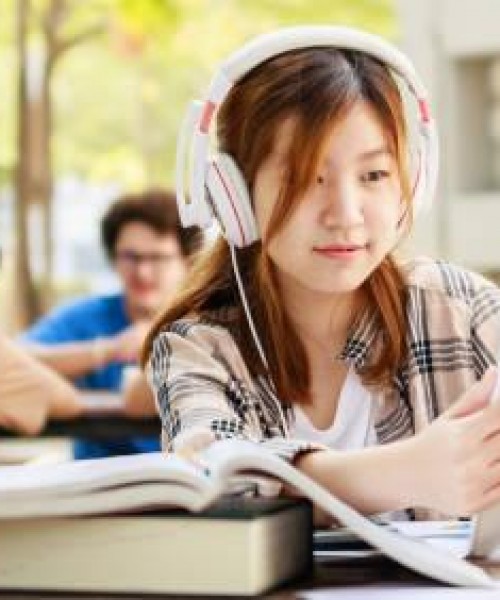它我们看历史的根源,印度文化是基于对教育的崇敬,延伸了几千年。在古代,它是格鲁酷系统蓬勃发展。一个世界上第一大住宅大学成立于公元前第五世纪,那烂陀有近10000学生和2000教师。虽然当时的教育主要集中在宗教和哲学上,但在几乎所有的领域都是可以学习的,吸引了来自世界各地的学生和学者。印度的许多历史悠久的高级思维与数学和科学探究教学源于学者在这样的高等教育机构。2没有外部考试一般是大师谁决定学生的适宜性对他的教育完成了学校搬迁。在很大程度上,学习是珍贵的本身,和教师的社会地位和知识自由是伟大的。3与莫卧儿王朝的入侵,改变教育方案。教师成为国家的一位付费代理人。教育资格意味着更好的就业前景和社会流动性的机会增加。
India's higher education system is the third largest in the world, after China and the United States.1 The major higher education systems in India are based primarily on variations of the 19th century Western University model. Faculties in various disciplines are expected both to teach post-secondary courses to students, as well as to do original research in their areas of specialty.
It we look at the historical roots, Indian culture is based on a reverence for education that extends back thousands of years. In the ancient times, it was the Gurukul system that flourished. One of the world's first great residential universities was established at Nalanda in the 5th century B.C. It had close to 10,000 students and employed 2000 teachers. Though primary focus on education at that time was on religion and philosophy, learning in virtually all fields was available and attracted pupils and scholars from around the world. Much of India's long history of advanced thinking and teaching in mathematical and scientific inquiry derives from scholars at such higher educational institutes.2 There were no external examinations and generally it was the Guru who decided on the suitability of the students to move out of the school on completion of his education. To a remarkable extent, learning was prized for its own sake, and the social status and intellectual freedom of teachers was great.3 With the Mughal invasion, the educational scenario changed. Teacher became a paid agent of the State. An educational qualification meant a better job prospect and increased chances of social mobility.
The modern system of higher education began over 150 years ago under the British rule when the first three universities were established in affiliation with British institutions. In the next 90 years, there was a slow development of higher education with focus largely on Western arts education with little focus on science education. Looking at education as a commodity which will pay dividends in future however continued during this period. There was a huge demand for higher and higher educational degrees- not necessarily for better learning.
Upon independence in 1947, and even today, every aspect of India's educational system has been based on the British colonial legacy i.e. the educational levels, curriculum frameworks, physical structure of schools and classrooms, and timing of examinations. In the medical education system, rural orientation and practical exposure of medical undergraduate students to the health care delivery systems and field realities was lacking. In the past 60 years, the development of higher education has been rapid. The number of higher education institutes increased from 500 in 1947 to 5000 in 1980 and then to over 13,000 in the year 2000. Until the liberalization of the economy in the late 1990s, the university system was funded largely from public funds.5 Though private schools of medicine existed, the growth of the private system was blocked till about the year 2000.
Since then, the expansion of the higher education system including Medicine has been chaotic and largely unplanned. Though initial growth of private medical colleges began with a drive to make the system socially inclusive, later the rapid proliferation has been largely profit driven.6 There has been a sudden and dramatic increase in the number of medical schools without a proportionate increase in funding or in intellectual resources.7 As a consequence, academic standards have suffered and there is a dilution in quality of medical graduates produced. India faces the same situation today which America had in the pre-Flexner era (Ref).
India has the largest number of medical schools anywhere in the world. Today, it has 330 medical colleges, with ….. in the public sector and…..in the private sector 9 (MCI website). It has seen unprecedented growth in the private sector in the last few years, with the public sector being almost static. Many of these private medical schools have inadequate infrastructure and questionable (profit making) motives. All public medical schools have caste based reservations and a lower cut off score is used for decision on admission of social groups presumed to be disadvantaged.10. Most private medical schools, on the other hand, make huge sums of money allowing rich people who can afford exorbitant fees to bypass the entrance examinations. Still, many support privatization of medical education as they see this as a necessary consequence of caste based reservations in the government institutions.11
Almost all the medical schools, except a few autonomous institutions are regulated by the Medical council of India (MCI). There are 28 states and 7 union territories in the country. Most of these states in the different geographical locations have different local cultures and values. Though Nationally, English is almost the second language in India, and the language in which medical courses are delivered throughout the country, a large majority of states have different local languages and dialects which are used for communication at a local level. The proficiency in the English language amongst students and teachers varies drastically across different regions of the country outside the metropolitan states. Outside the syllabus, the communication between students and teachers and patients often occurs in their local language. Many of the students with poor English skills remain at a disadvantage in terms of communication and thereby performance.
It is felt that Indian education system tends to produce people who are good at acquiring knowledge and certain skills, but not necessarily efficient at applying the knowledge, problem solving or doing out of the box lateral thinking. The entrance examinations for MBBS seats are based on multiple choice questions of doubtful utility, further encouraging rote learning amongst astudents.. Barring occasional medical schools, there are no aptitude tests or interviews used for selection of these medical students. Although interviews can be an important part of selection process but they have not gained acceptance because of the lack of transparency and lack of public confidence in an interview based system.11 Pursuit of objectivity to the point of obsession takes its toll on validity and reliability of assessment.
Almost all medical schools follow the curricula according to the guidelines given by the Medical Council of India (MCI 1997). 12 The council not only gives guidelines on the expected outcomes but also on the way the students should be assessed. Though on paper, the expected outcomes of medical graduates are the same across the country, there are lots of individual and institutional variations in standards of both undergraduate and postgraduate medical education. The only similarity that exist is in the weightage given to various components of assessment, as it is dictated by the MCI.
In the Indian culture, failure in examinations is considered highly negatively by both parents and teachers. Though this may be true world wise, academic failures are viewed negatively by the society and are often associated with lowering of self-esteem and worth of individuals as perceived by others. And therefore a lot of stress is laid on passing examinations and acquisition of degrees. In effect this means that many of the un-deserving students are declared pass by lowering the criteria. Across all medical schools, the pass mark almost universally remains 50 percent, irrespective of the tools used for assessment. There are no formal mechanisms of standard setting, for different attributes (e.g. theoretical knowledge and practical skills) and using different assessment tools (e.g using essays or MCQs). Similarly grades on various types of tests are often combined to produce an aggregate of doubtful utility. Although summative examinations are supposed to be criteria referenced, many a times, it is norm referencing which takes priority. The generalizability of the results thus becomes poor.
What is ensured in the practical / clinical examinations are the following formalities:
The number of examiners (external and internal)
Time allocated as per the total number of students appearing for exams
The number of cases e.g. one long and two short cases for undergraduates exams in clinical disciplines
Oral viva-voce (with not much structural uniformity)
There is not much emphasis or focus on the assessment of attitudes, behaviors, communication skills, professionalism and ethicas. To a large extent, it is related to the obsession with objectivity and anything which cannot be objectively measured is discarded. Though most teachers claim they value these attributes including certain issues like end of life issues, palliative care awareness, care of the dying etc. but in the assessments practiced by a large majority of medical schools, there are no mechanisms to build in these attributes in the assessment of graduates or post graduates. Even though some examiners do pay attention to these attributes, no candidate ever fails on account of lack of these skills.










